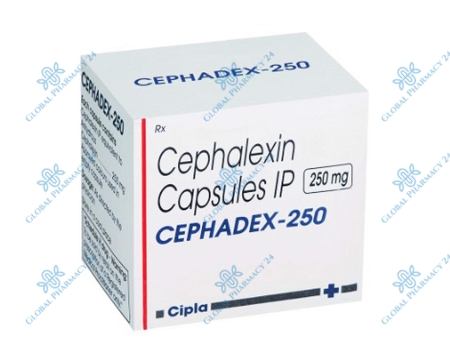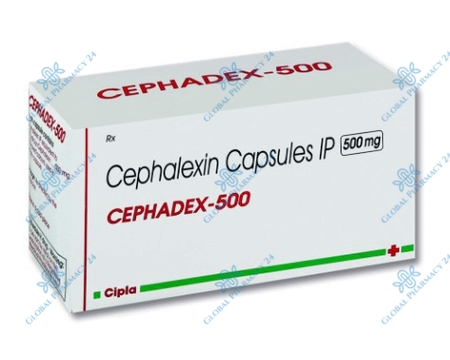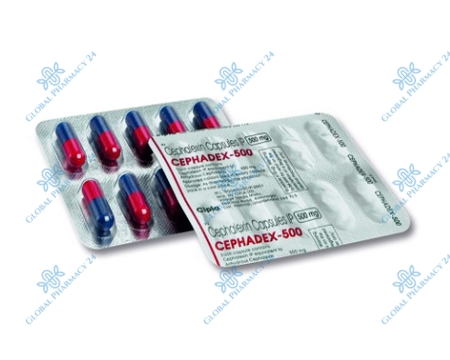| Feature | Description |
|---|---|
| Active Ingredient | Cephalexin |
| Formulation | Capsules, Oral Suspension |
| Uses | Bacterial Infections Treatment |
| Dosage Forms | 250 mg, 500 mg Capsules; 125 mg/5 mL, 250 mg/5 mL Suspension |
| Duration of Treatment | 7-14 Days Depending on the Infection |
| Side Effects | Nausea, Diarrhea, Vomiting, Rash |
Exploring Cephadex: A Brief Introduction
Cephadex, known for its effective treatment against bacterial infections, plays a pivotal role in the pharmaceutical industry. As a form of cephalexin, it belongs to the cephalosporin class of antibiotics, designed to combat a wide range of bacterial infections. Its formulation, available in both capsules and oral suspension, offers flexibility in administration, catering to various patient needs and preferences.
The significance of Cephadex extends beyond its basic use, encompassing a comprehensive approach to treating infections without contributing to the growing concern of antibiotic resistance when used responsibly. Its broad spectrum of activity ensures that it remains a preferred choice for healthcare professionals in managing conditions such as strep throat, skin infections, and urinary tract infections, among others.
What is Cephadex?
Cephadex stands out in the realm of antibiotics for its unique properties and effectiveness. As a first-generation cephalosporin, it targets bacterial cell wall synthesis, leading to bacterial cell death. This mechanism of action makes it a fundamental option for treating infections caused by susceptible bacteria, emphasizing its importance in clinical settings.
Understanding Its Unique Properties
The unique properties of Cephadex, including its stability in the presence of gastric acid and its ability to be absorbed effectively from the gastrointestinal tract, contribute to its widespread use. Its pharmacokinetic profile allows for significant levels to be reached in various tissues and fluids, ensuring effective bacterial eradication.
The Science behind Cephadex
The scientific foundation of Cephadex lies in its chemical structure and the way it interacts with bacterial cells. Its efficacy is rooted in its ability to interfere with the synthesis of the bacterial cell wall, a critical component for bacterial survival. This targeted approach minimizes the impact on beneficial flora, reducing the likelihood of developing antibiotic resistance and side effects.
Research and development in the field of cephalosporins have positioned Cephadex as a key player in antibiotic therapy. Its role in treating a diverse array of bacterial infections demonstrates the importance of understanding the underlying science that supports its use in clinical practice.
Its Role in Chromatography
While primarily known for its medical applications, Cephadex also finds relevance in chromatography, a testament to its versatile chemical properties. This highlights its utility in scientific research beyond its clinical use, underscoring the compound's significance in both healthcare and laboratory settings.
The Chemical Properties That Make Cephadex Stand Out
The distinct chemical properties of Cephadex, such as its molecular stability and solubility, facilitate its role in chromatography. These characteristics enable it to be used as a reference or standard in various analytical procedures, further demonstrating its versatility and importance in scientific research.
Navigating the World of Cephadex
The Cephadex family encompasses a range of products, each designed to meet specific medical needs. Understanding the various synonyms and formulations under the Cephadex umbrella is crucial for healthcare providers and patients alike, ensuring the optimal selection of antibiotic therapy for bacterial infections.
The diversity within the Cephadex product line reflects the ongoing efforts to enhance antibiotic treatment options. This variety allows for tailored treatment plans, accommodating individual patient needs and contributing to more effective healthcare outcomes.
Understanding Its Various Synonyms
Cephadex is known by several synonyms and brand names, each representing the same fundamental antibiotic but marketed under different labels. This diversity in naming can sometimes lead to confusion, making it important for healthcare professionals and patients to recognize the equivalences and differences among these options.
Navigating the Different Products Under the Cephadex Umbrella
Within the Cephadex range, there are various products tailored to specific treatment requirements. This includes different dosages and formulations, ensuring that there is a suitable option for virtually every type of bacterial infection, from mild to more severe cases.
Wrapping Up: What Makes Cephadex Special
Cephadex's significance in antibiotic therapy cannot be overstated. Its broad spectrum of activity, combined with a favorable safety profile, positions it as a valuable tool in the fight against bacterial infections. The continued reliance on Cephadex in medical practice underscores its effectiveness and the trust it has garnered among healthcare professionals.
The development and utilization of Cephadex highlight the progress in antibiotic therapy, offering hope and healing to countless patients worldwide. Its role in healthcare is a testament to the ongoing efforts to provide effective, safe, and accessible treatment options for bacterial infections.
Summarizing the Benefits of Cephadex
The benefits of Cephadex include its broad antibacterial coverage, its efficacy against a wide range of bacterial infections, and its generally well-tolerated nature. These advantages make it a cornerstone in the management of bacterial infections, reflecting its indispensable role in modern medicine.
Pros and Cons of Cephadex
- Pros:
- Effective against a wide range of bacterial infections
- Available in multiple formulations for ease of use
- Generally well tolerated with a low risk of serious side effects
- Can be used in patients of all ages, including children
- Cons:
- May cause allergic reactions in individuals sensitive to cephalosporins
- Possible gastrointestinal side effects such as nausea and diarrhea
- Not effective against viral infections, limiting its use to bacterial causes
- Overuse may contribute to antibiotic resistance
Conclusion
Cephadex remains a pivotal antibiotic in the treatment of bacterial infections, offering a combination of effectiveness, safety, and versatility that is hard to match. Its role in healthcare is well established, providing a reliable option for both acute and chronic bacterial infections. As antibiotic resistance continues to challenge medical professionals, the judicious use of medications like Cephadex becomes even more critical. By understanding its benefits and limitations, healthcare providers can continue to leverage Cephadex as a valuable asset in their therapeutic arsenal.
In summary, Cephadex stands out not only for its clinical efficacy but also for its contribution to the broader field of antimicrobial therapy. Its continued use and study offer the potential for further advancements in the management of bacterial infections, ensuring that Cephadex will remain a key component of medical care for years to come.
FAQs Cephadex
What is Cephadex used for?
Cephadex is primarily used for treating bacterial infections. It belongs to a class of antibiotics known as cephalosporins, which work by inhibiting the growth of bacteria.
How should I take Cephadex?
Cephadex is typically taken orally, either with or without food. Follow the instructions provided by your healthcare provider or pharmacist for the correct dosage and duration of treatment.
What are the possible side effects of Cephadex?
Common side effects of Cephadex may include nausea, vomiting, diarrhea, and abdominal pain. In some cases, allergic reactions such as rash, itching, or swelling may occur. Contact your doctor if you experience severe or persistent side effects.
Can I drink alcohol while taking Cephadex?
It is generally recommended to avoid alcohol while taking Cephadex, as it may increase the risk of certain side effects such as stomach upset or dizziness. Consult your healthcare provider for personalized advice regarding alcohol consumption during Cephadex treatment.























